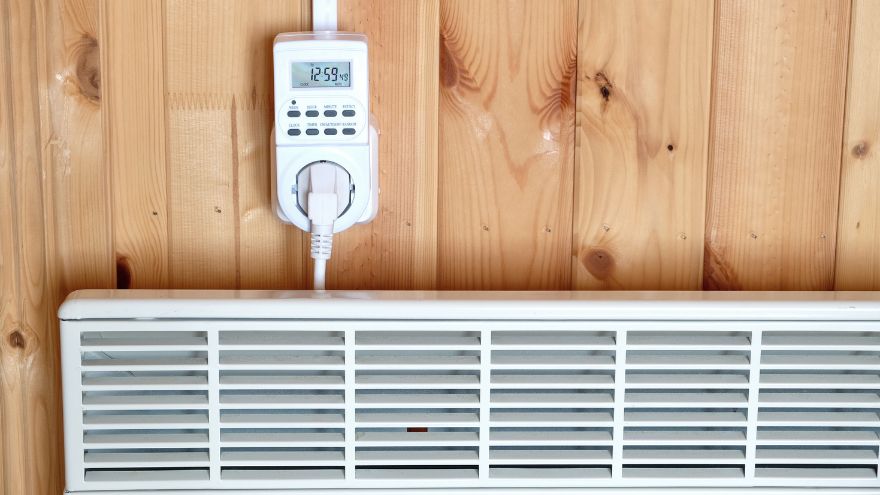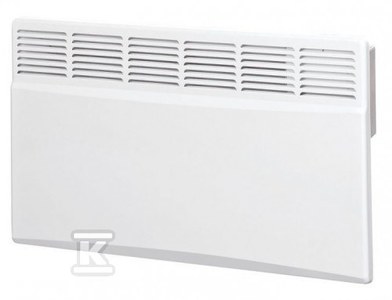Are you looking for an effective and energy-saving solution for heating your interior? We present you the world of convector heaters - innovative devices that provide not only a comfortable temperature, but also energy efficiency. You will learn about the benefits of convector heaters, how they work and how to adjust them to your individual needs. Get ready to discover a new generation of heating that will not only provide you with comfort, but also energy savings.

Check out convector heaters at the Onninen wholesaler
How does a convector heater work?
A convector heater is a modern device that works on the principle of air convection. It uses the natural air flow process to effectively heat the room. The principle of operation of a convector heater is quite simple. The inside of the heater consists of an electric heater or heating element that heats the air inside the device. The heated air rises upwards, creating a stream of warm air. When the air reaches the top of the radiator, it is released outside, creating a convective air flow in the room.
Convection is the circulation of air where warm air rises and colder air sinks down. This process distributes the temperature evenly in the room, eliminating local temperature differences. Thanks to this, the convector heater provides pleasant and uniform heating.
Many models of convector heaters are equipped with a thermostat that allows you to control the temperature in the room. Thanks to this, you can easily adjust the operation of the radiator to your preferences and save energy.
Convector heaters are also often equipped with a fan that accelerates air circulation and increases heating efficiency. The fan can be controlled manually or automatically, depending on the radiator model.
Overall, a convector heater is an effective and economical solution for heating rooms. Thanks to the use of air convection, it ensures even heat distribution, which contributes to comfortable and effective heating of the interior.
What is the difference between a convection heater and a convector heater?
Convection heater and radiator  Convector are two different types of radiators that operate based on the principles of air convection. However, there are subtle differences between them.
Convector are two different types of radiators that operate based on the principles of air convection. However, there are subtle differences between them.
A convection heater is the simplest type of heater. It consists of a closed housing containing an electric heater or other heating element. When the heater is turned on, the air inside the housing is heated, becomes lighter and rises upwards. Cold air from the surroundings is drawn to the bottom of the radiator and heated by convection. The warm air rising to the top then flows out of the top opening of the radiator, creating a natural convection flow.
In turn, a convector heater uses an additional element in the form of a fan, which increases air flow and heating efficiency. Air is drawn in through the lower inlet of the radiator and passes through the heater or heating element, where it is quickly heated. The fan then pushes the warm air out of the radiator, creating a stronger and more directed heat flow. Thanks to this, the convector heater is more effective and heats the room faster than a convection heater.
To sum up, the main difference between a convection heater and a convector heater is the presence of a fan in a convector heater, which accelerates the air flow and increases the heating efficiency. A convector heater offers a more directed heat flow and faster room heating than a convection heater.
How much electricity does a convector heater consume?
The power consumption of a convector heater depends on its power and the time for which it is used. The power of a convector heater is given in watts (W) and can be found on the product label or in the technical specifications.
To calculate electricity consumption, multiply the heater's power (expressed in watts) by its operating time (expressed in hours). The result will be given in kilowatt hours (kWh). For example, if a convector heater has a power of 1500 W (1.5 kW) and is used for 5 hours, its electricity consumption will be 7.5 kWh (1.5 kW * 5 hours = 7.5 kWh).
It is worth remembering that electricity consumption may vary depending on the temperature setting on the radiator. The higher the temperature, the greater the power consumption. Additionally, some models of convector heaters may have additional functions, such as a thermostat or a programmable timer, which may affect energy consumption.
Therefore, it is always worth checking the technical specifications of the convector heater to find out its power and estimate the power consumption depending on the duration of its use and operating settings.